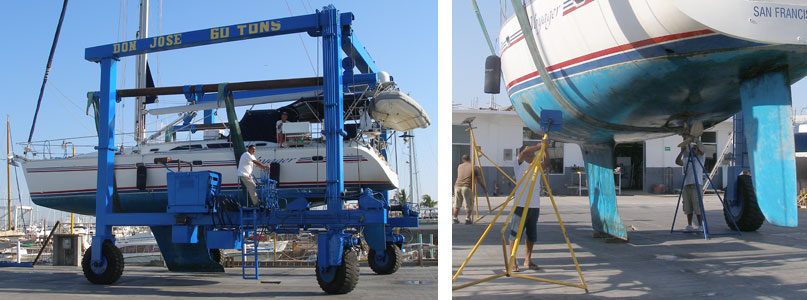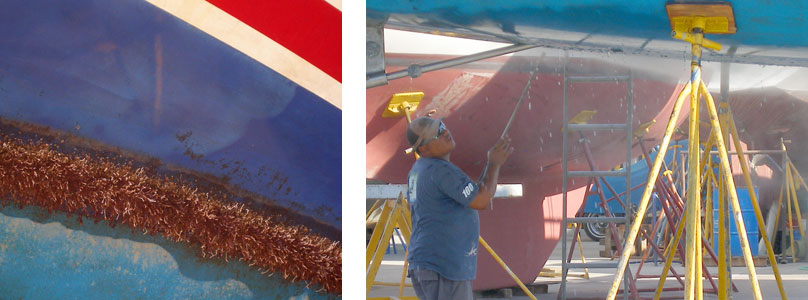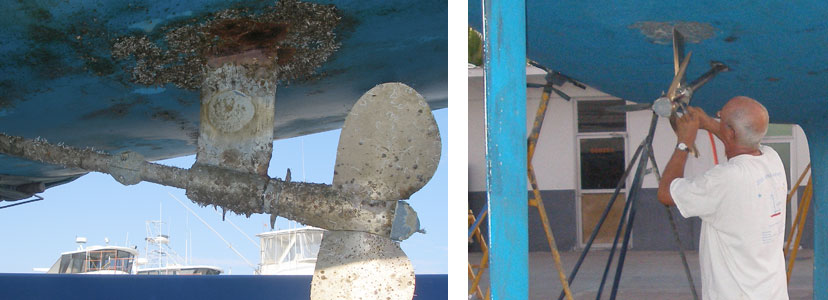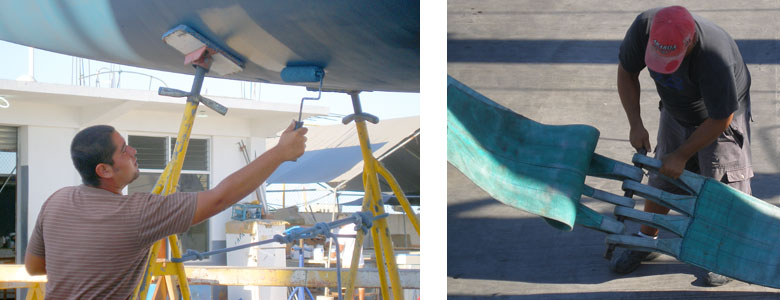Boats that stay in the water continually have anti-fouling paint applied to the bottom, to retard the growth of marine life. This saves time and effort to clean the boat’s undersides, and helps it to move efficiently through the water. During our 10 years in San Francisco Bay, we could spread out these paint jobs at approximately 3 year intervals. Now that we are in warmer water (things grow faster!), we had to paint the bottom in only two years (one year in cool water, one year in warm water) after our last trip to the boatyard.

For several months we shopped for a boatyard that we would like, both on the Baja peninsula and Pacific mainland. A few weeks ago, we selected the Marina del Palmar (travel_lift@yahoo.com.mx) boatyard in La Paz. This is a nice, family run operation, one of the cleanest boatyards we have been in, with plenty of (efficient and several who are English speaking) staff, and their pricing was competitive. The owner’s 4-5 year-old son had a great time riding his mini gas-powered motorcycle (with training wheels!) throughout the yard and under the boats in the afternoons, cute (we missed getting a photo, use your imagination).

Their 60-ton Travelift, named “Don Jose,” (the machine that moves boats in and out of the water and around the yard), is the perfect size for our boat – other boatyards that have smaller/shorter lifts that require us to remove rigging and equipment (like our satellite antenna and bimini), which is a major pain. The lift was moved into position over our boat, several workers handled the boat lines to get it into position. Two large slings were adjusted and placed under the boat at specific lifting points that are marked on our hull. The boat was raised from the water and rolled over to an open spot in the yard where it was placed on stands for the work to be done. At the end of the process the lift picked the boat up off the stands, and returned it to the water. Bill stayed on the boat when it was hauled from the water, and we both were aboard as the boat was re-floated.

We were able to stay on Voyager overnight while she was in the yard – it is always a good idea to observe the work in progress – even in the U.S. It was a bit inconvenient as we could not run any water (would drain out the bottom of the boat onto our wet paint!), but the marina/yard had restrooms/showers. The weather was still hot (we couldn’t run the air conditioner as it requires water circulating in and out of the boat), so we exited the yard from time to time to seek out a air-conditioned store or restaurant and we could at least run our electric/12v fans.


For those of you boating folks who are reading, there were a few other little projects we accomplished. We removed a dynaplate (formerly helped the transmission/reception of our single-sideband radio) we no longer need and the yard put in a fiberglass patch where it was located, Bill polished the stainless prop and shaft so they looked like new. The yard sanded and applied a barrier coast so that the new bottom paint could cover where our waterline was raised a few inches (the more stuff we put on the boat, the more we hang down into the water). The yard did 98% of the work, but had no problems with a couple of little projects that Bill wanted some “hands on.”

